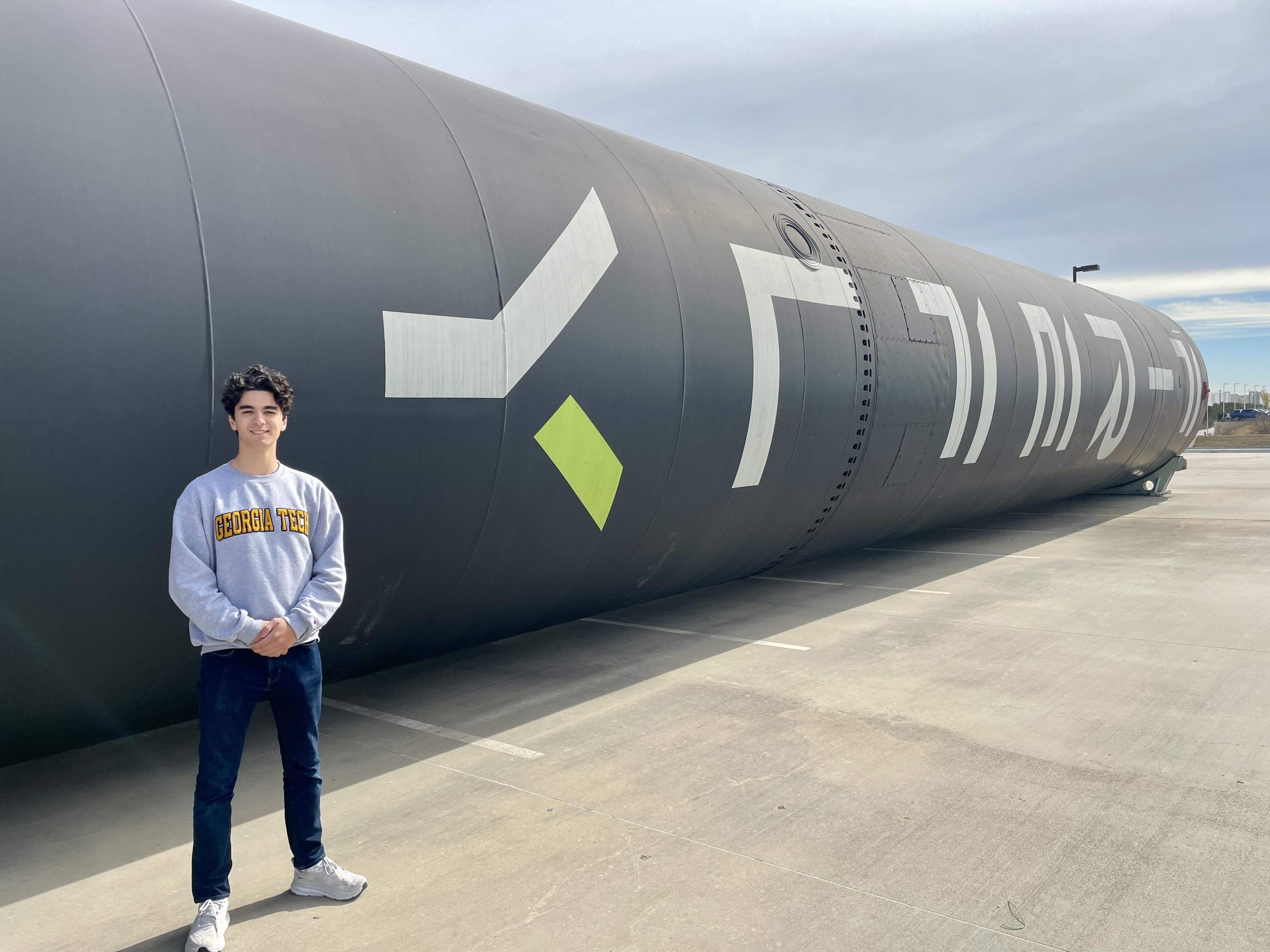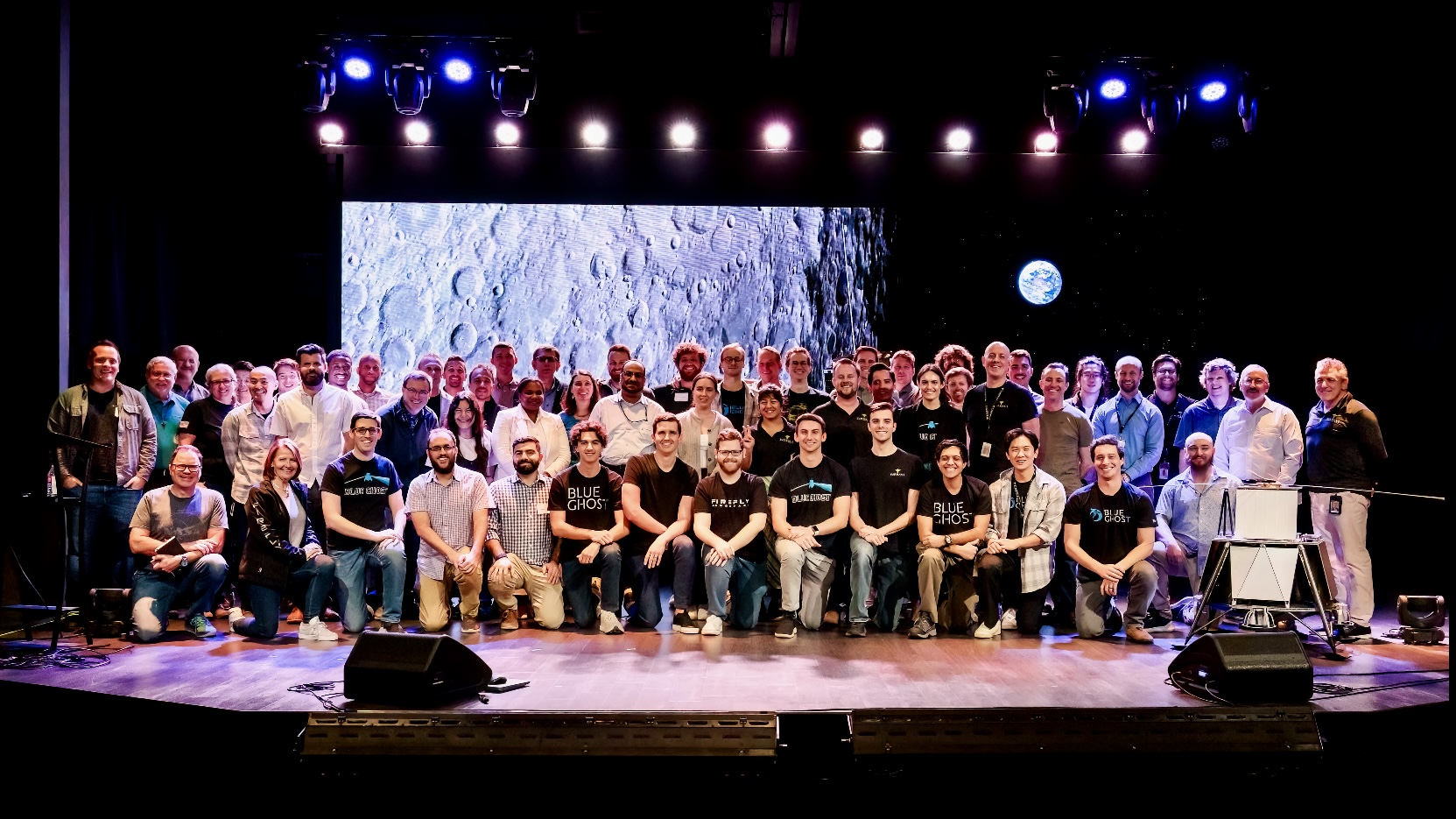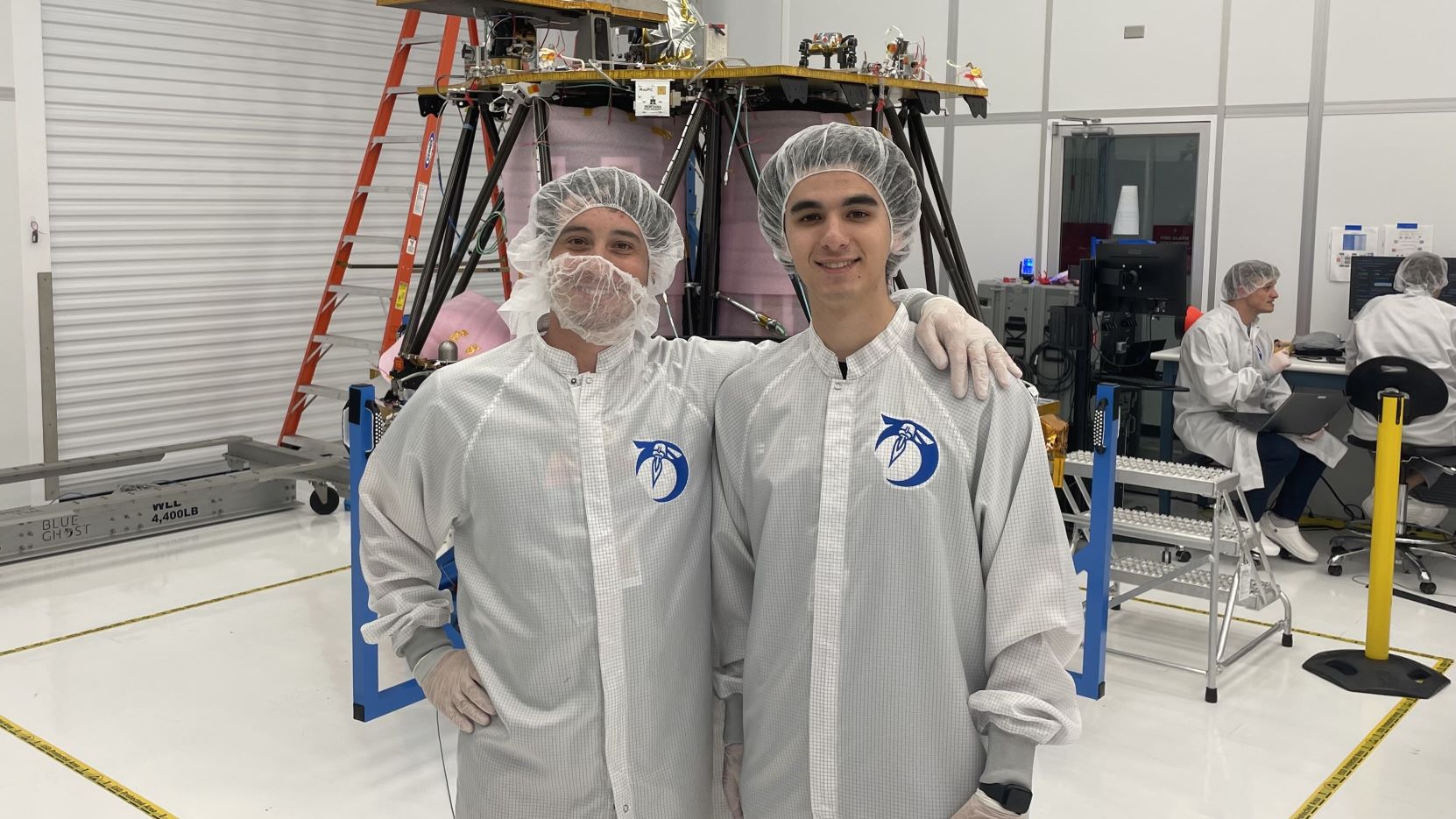
Woodruff School Student Completes Internship That Is Out of This World
May 5, 2025
By Chloe Arrington
Patrick Villarreal, a fourth-year undergraduate student in the George W. Woodruff School of Mechanical Engineering, took his experience and knowledge to new heights recently after completing a 14-week hands-on internship at Firefly Aerospace, where he saw his own work launched into orbit, contributing to the very projects that will help pave the way for future space exploration.
Firefly Aerospace is an end-to-end space transportation company whose mission is to enable the world to launch, land, and operate launch vehicles, lunar landers, and orbital vehicles in space.
Villarreal's journey to Firefly Aerospace began with curiosity and an online application. "I heard about the internship by checking their website for applications, but I had no idea that it would be a bigger opportunity than I initially expected," he said.
During the three-month internship, Villarreal worked on real-time, meaningful projects that directly supported the company's mission. This included a variety of critical tasks, such as designing and assembling flight hardware for Firefly Aerospace's lander missions.
Villarreal worked on Firefly Aerospace's first Commercial Lunar Payload Services (CLPS) flight for the National Aeronautics and Space Administration (NASA), Blue Ghost Mission 1, which launched on January 15 at 1:11 a.m. EST aboard a SpaceX Falcon 9 rocket from Launch Complex 39A at the agency's Kennedy Space Center in Florida.
Villarreal worked directly with the Blue Ghost 1 team and contributed to multiple aspects of the project. He designed a ground support tool to streamline mechanism integration for the LEXI telescope payload, performed final acceptance testing on the final flight units of the four lander legs, worked closely with spacecraft technicians to write work instructions for complex mechanism assembly, and suited up for the cleanroom daily to assist with miscellaneous Mission 1 lander integration tasks. He also assembled the final flight antenna that got mounted to the top of the lander for in-space communications.
Blue Ghost will deliver 10 instruments to the lunar surface as part of NASA's CLPS initiative. After approximately 45 days in orbit, Blue Ghost successfully landed in Mare Crisium (a large, dark, basaltic plain on the Moon) on March 2. It captured the lunar sunset on March 16, providing data on how solar activity causes lunar dust to levitate and create the lunar horizon glow, which was first observed during Apollo 17. Following this it will operate several hours into the lunar night.
"I'm very excited to see structures and mechanisms I have designed or assembled fly into space and land on the moon," said Villarreal. "I also designed flight hardware that will launch on the Mission 2 lander towards the end of 2026."
Along with this, Villarreal supported the Mission 2 critical design review with members of NASA and researched conceptual payload deployment designs for future missions.
One of the standout aspects of Villarreal's time at Firefly Aerospace was the company's unique team dynamics. Despite the massive scale of the lander program, the Firefly team consisted of just 50 full-time employees, and Villarreal was the sole intern.
"There's something special about being part of a small team; I really liked my coworkers' passion for the project. Being the only intern, I was treated like a full-time employee and had the chance to contribute in multiple ways," said Villarreal.
He was also surprised by the scope of the work being done with a team of this size. "NASA had about 400,000 people working on the Apollo lunar landing program at its peak over 50 years ago. Firefly's lander project is on a smaller scale, but still, the fact that only 50 people are working on something so significant is incredibly impressive," he added.


This was Villarreal's second internship, and he has since completed a third. He has very straightforward advice for students seeking internship opportunities.
"Pursue every avenue possible, whether it's cultivating a relationship with recruiters or applying to every company you may be interested in," he said. "Keep talking to recruiters and finding applications to fill out because you might find a role to be more interesting than you initially thought!"
As a proud Yellow Jacket, Villarreal credits much of his success to the hands-on learning opportunities Georgia Tech provides.
"I'm happy to say that Georgia Tech prepared me well for this role, especially through our engaging extracurricular engineering teams like GT Off-Road and RoboJackets. Without these experiences, I wouldn't have had the hands-on exposure needed to be impactful in an important internship like this one."
